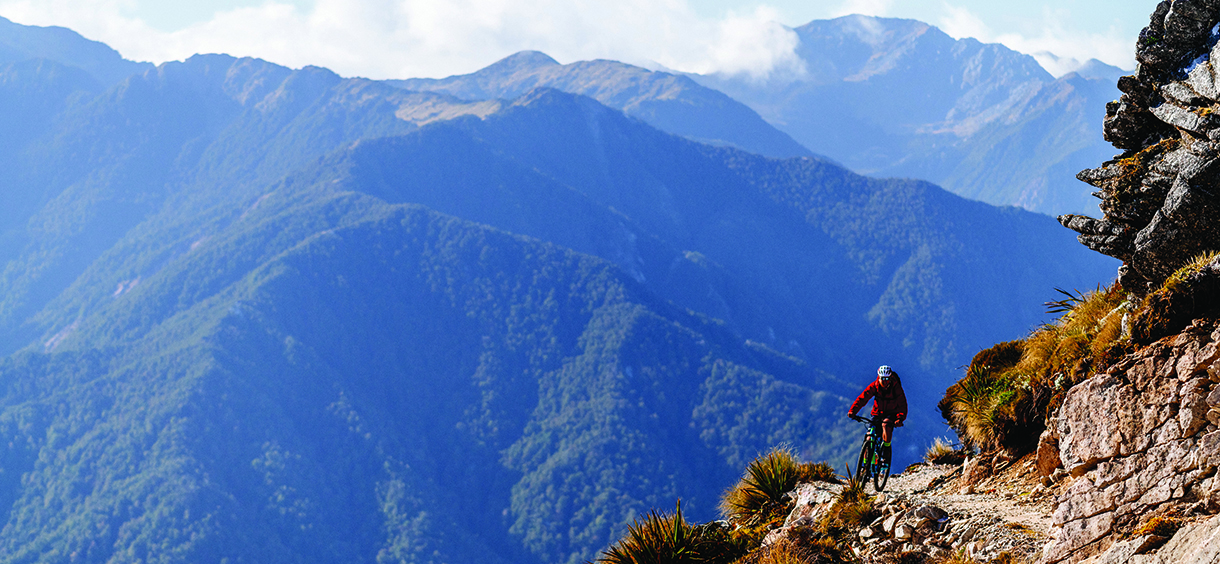
Riding the Old Ghost Trail
New Zealand’s greatest single-track route was a long shot in the making, but now offers some of the country’s most remote, rugged, and remarkable terrain for truly adventurous mountain bikers.
PHOTOGRAPHED AND WRITTEN BY CHRIS BRINLEE JR.
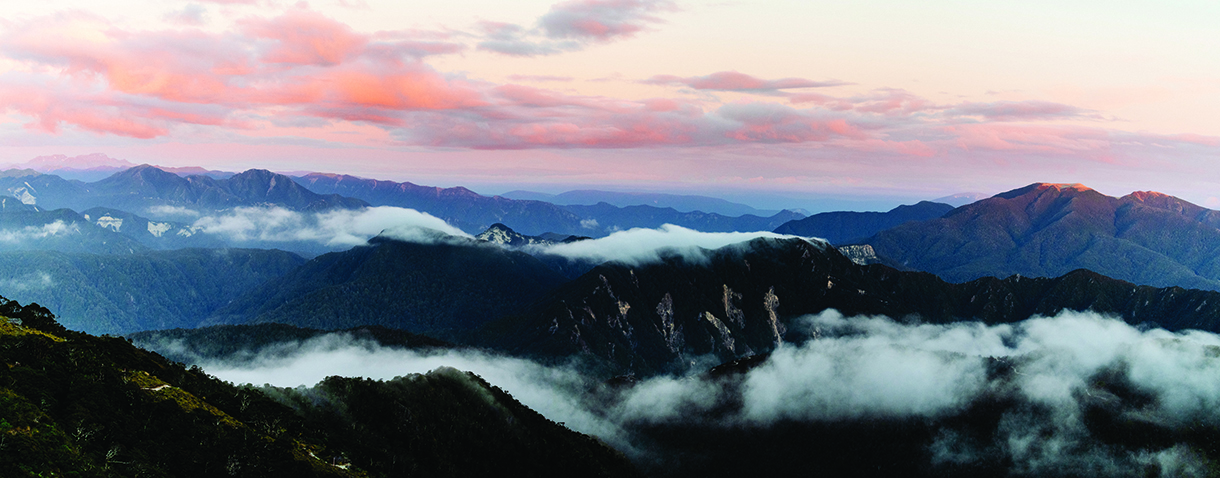
Fifty-three miles through temperate rainforest and along alpine ridgelines tucked into the wild northwestern corner of New Zealand’s South Island, near the national parks Kahurangi, Nelson Lakes, and Paparoa, The Old Ghost Road (oldghostroad.org.nz) has been described as the country’s best and longest route for hikers and bikers alike. The story of how it came into existence dates back to the apex of New Zealand’s gold rush in the 1860s and to the 2006 opening of a rustic but well-appointed lodge on the edge of the wilderness, Rough and Tumble Bush Lodge (roughandtumble.co.nz).
Nestled at the mouth of the mighty Mokihinui River Gorge, the lodge was named after a tributary of the Mokihinui that runs in front of it. You can get there by driving about 5 ½ hours from Christchurch or flying 45 minutes from Wellington and then driving 50 minutes from Westport Airport.
When American Marion Boatwright and his Kiwi partner, Susan Cook, first made the venture, they were enamored of the area’s pristine, frontier-like nature. Sensing an opportunity, the couple purchased land on the tributary in 2005. Today, their sidetrack Bush Lodge for intrepid travelers promotes a genuine New Zealand experience.
But before the lodge was even open, a local energy company proposed damming the Mokihinui, which would inevitably force the Rough and Tumble to close indefinitely while the project was under construction. It seemed that Boatwright and Cook’s dream of luring adventurers to their gem on the West Coast would also be damned.
Then there was a visit from a stranger, says Boatwright, carrying “a lost map born of gold lust,” which is further discussed in his book, Spirit to the Stone: Building the Old Ghost Road. The yellowed parchment depicted the land from a survey conducted in 1886. Carefully drawn by hand was the path of an old mining road, which led from nearby Lyell (the former Western-style boomtown) north through the mountains toward the Mokihinui. There, it linked up with a similar path in the gorge near the lodge.
Boatwright and a local bushman nicknamed “Stacky” heeded the good omen and spent six days following the marked path, which they found in serious disrepair from downed trees and impassable slips of near-vertical rock from recent earthquakes. Additional surveys were made and despite Boatwright and Stacky’s initial optimism, the task of creating The Old Ghost Road was deemed all but impossible. The section from Lyell Saddle to the South Branch of the Mokihinui wouldn’t work; it was just too rugged.
There was also the uncertainty about the Mokihinui River dam … until the trail project got three crucial breaks: The trust established to oversee it was awarded a sizable grant from the New Zealand Cycle Trail initiative; the dam project was canned; and an alternative route from Lyell Saddle was discovered. The new route would lead high into the alpine, instead of going low into the formidable river valley as the historic survey showed.
In 2015, eight years after Boatwright and Stacky’s first survey trip, The Old Ghost Road opened. The mostly volunteer, 26,500-hour grassroots effort restored the original 11 miles and linked the road with the Mokihinui Gorge trail by creating a new track over and through the Lyell Mountains.
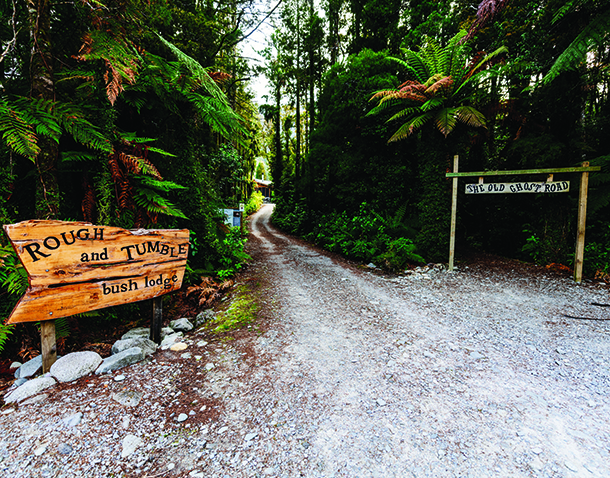
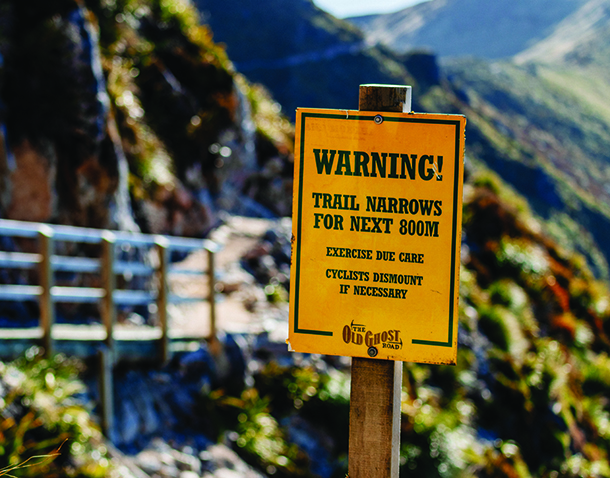
Buller Adventures (bulleradventures.com), an official partner of The Old Ghost Road route, picks up bikers after breakfast at the Rough and Tumble and drives them to the trail’s southern start for a two- or three-day trek. From Lyell, pedal a slow, gradual climb through the forest to Lyell Saddle. There’s a short, quick descent from that point, then the incline increases steadily until reaching the alpine.
The second section is dramatic, aggressive, and impassioned—much of the track was blasted out of granite; sheer drops lead to an abyss below. The path moves in and out of the mountainside and leads to the scenic Ghost Lake Hut before continuing through a hand-constructed section of switchbacks that give way to the Skyline Ridge and eventually the Skyline Steps, the most breathtaking and technical section that concludes the crux of the ride and the trail’s construction. It is all downhill from there: flowy, fast, and unquestionably fun. Riding there is total bliss; it seems to go on for hours, but nevertheless, it is over too soon.
The final leg begins with a steady, earnest climb through blasted rock up to another pass and is followed by hours of flowy downhill road through the jungle; subsequent smooth, fast flats along the river; and slow clambers over track carved from the cliffside along the Mokihinui Gorge. A zippy, rolling jaunt through the trees leads right back to the Rough and Tumble.
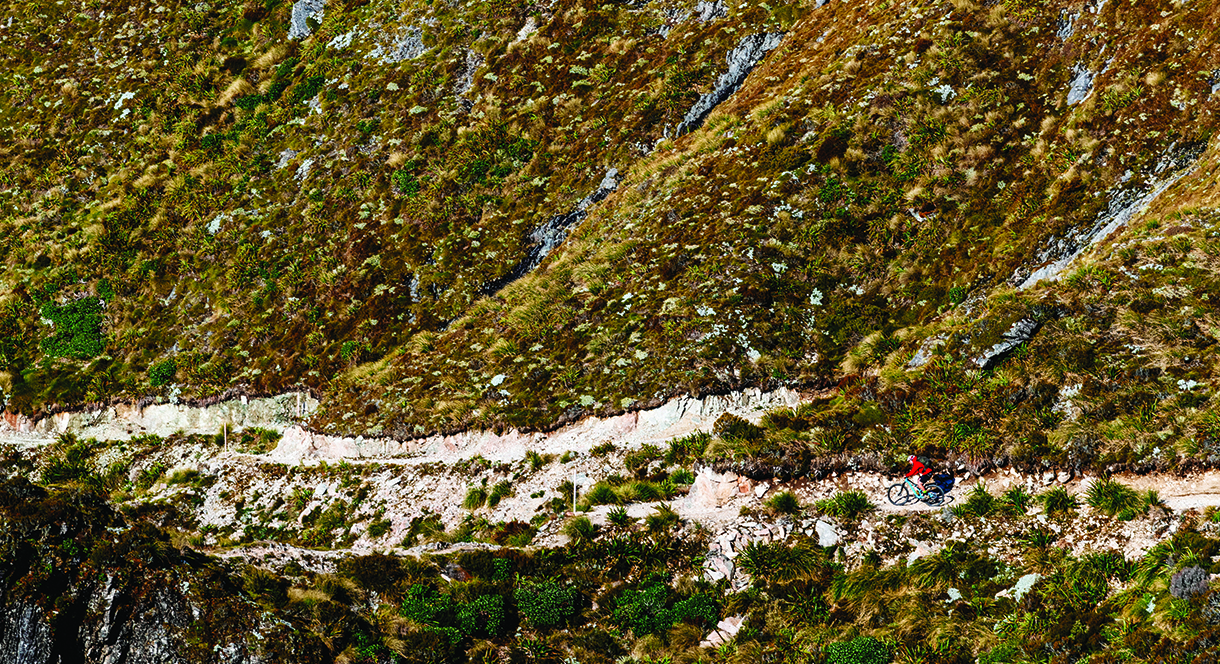
Most of the track is rated Grade 4/advanced, meaning that riders should expect long, steep climbs; narrow winding trails (just 1–2 feet wide in places); loose surfaces in sections; and obstacles that must be ridden over or avoided. Additionally, riders must be comfortable with traveling through sections with steep, exposed edges. Due to the length of the trail and the amount of elevation gained throughout, riders should be fit enough to travel for periods of up to eight hours per day.
It is recommended that only riders comfortable meeting the afore-mentioned criteria attempt The Old Ghost Road. But with good fitness and a solid understanding of their own skill level and abilities, novices can still ride, choosing to walk their bikes through the most difficult sections (specifically the area around Rocky Tor and from the Ghost Lake Hut to the Skyline Steps). The majority of the riding is graded intermediate and is immensely enjoyable for people with similarly measured skill.
Boatwright himself built five huts for overnight stays on The Old Ghost Road. They have kitchens with running water, gas stoves, cooking equipment, and crockery; an open communal area; small group bunkrooms; and porches characterized by fantastic views.
Unlike the mountain huts of the European Alps, these require that users carry and prepare their own food. Or Buller Adventures can pack gourmet meals or arrange for a chef to be flown in via helicopter. In addition to the standard bunkrooms, some of the locations feature private summer sleepouts that can be booked for couples, families, or small groups.
An abbreviated route can avoid long climbs but keep the thrill of massive downhill combined with a scenic flight. Buller Adventures also offers heli-biking packages. At a landing zone just outside the Rough and Tumble, bikes are loaded into a specially designed rack attached to a long line. From there, riders and their equipment are flown over the stunning Lyell Range and dropped off at the track’s highest point near the Ghost Lake Hut. Take a 37-mile ride north and end up at the Rough and Tumble or opt for a 19-mile, predominantly downhill ride south, finishing in Lyell. Either option can be completed in a high-intensity, turnkey day.
October until mid-May (that’s late spring, all of summer, and early autumn in the Southern Hemisphere) is the most popular time of the year to ride, but if the weather is favorable, The Old Ghost Road can be ridden any time of year, including in the temperate winter climate. If you’re planning a trip in advance, book in November for its warm days and cool nights—and because it is in season for nearby multiday rides such as the Queen Charlotte Track.
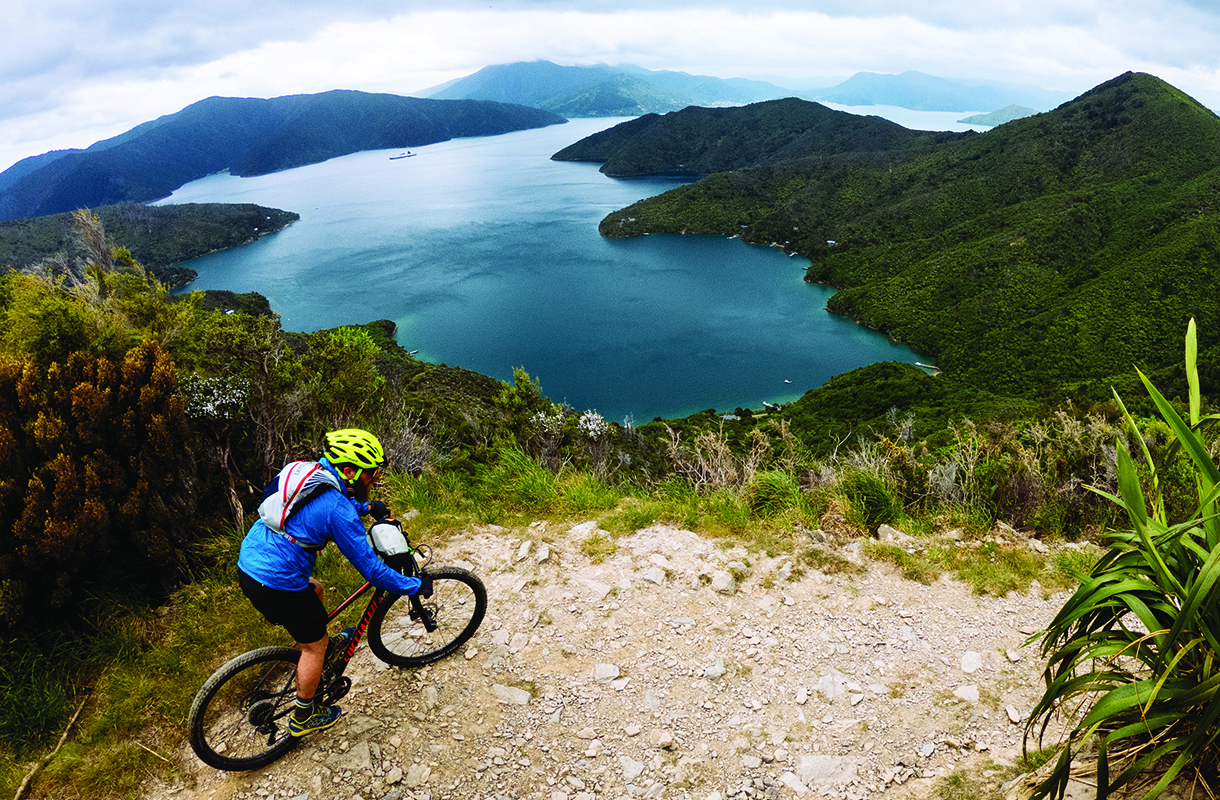
The Queen Charlotte Track
Located in Marlborough Sounds, a 2 1/2-hour drive northeast from Lyell, the 43.5-mile Queen Charlotte Track (qctrack.co.nz) passes countless coastal bights, beautifully indistinct lines between turquoise seas and sea green summits. The two- to three-day mission begins from the charming village of Picton. Following a 45-minute ferry ride operated by the Cougar Line (cougarline.co.nz), debark at Meretoto/Ship Cove, where Captain James Cook anchored the HMS Endeavour to resupply in 1770. As bikers begin the ride, the ferry continues, carrying their bags to The Portage (theportage.co.nz), where the hotel’s seaside rooms, a secluded swimming beach, and an ambrosial rack of lamb are the reward for a day’s ride. The grade is mostly intermediate, which translates to long, gentle climbs followed by exhilarating, flowy downhill sections—and many joyful hoots.




